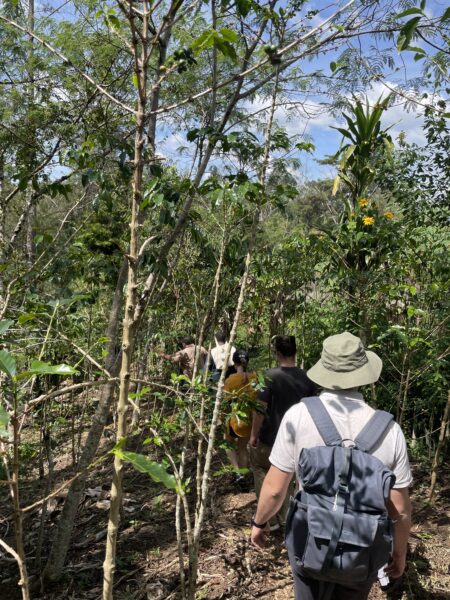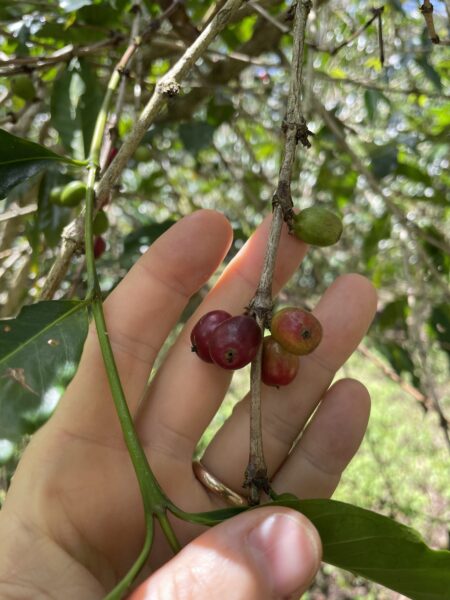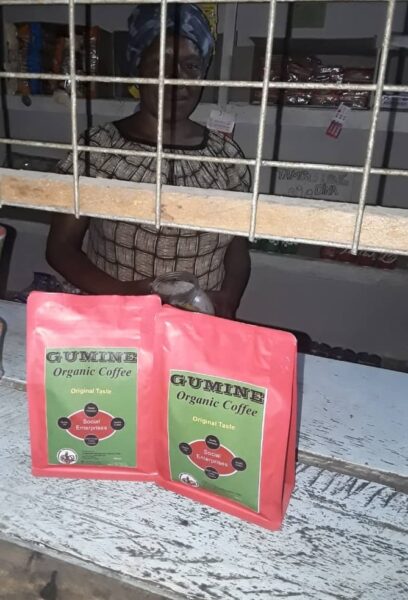The highlands of Papua New Guinea are known for some of the best coffee in the Indo-Pacific region — coffee that makes its way to international export markets and into many of our morning rituals. But increasingly the region’s coffee farmers are experiencing a hotter climate which is impacting the quality of their coffee.
As part of a research collaboration between the Australian National University, Sustineo and Nakau, our technical team are investigating how smallholder coffee farmers in Papua New Guinea can continue to strengthen the climate resilience of their coffee farms while exploring opportunities to diversify their income — including through carbon.
Nakau’s Alex McClean and Michael Dyer recently travelled to Simbu Province to meet coffee farmers and better understand the context of highland-grown coffee systems in Papua New Guinea.
“In any project we first need to understand the baseline scenario, which in this context is smallholder traditional coffee farming with sub-optimal levels of shade,” explains Alex. “The specific activity we want to investigate is increasing the shade tree density, and for coffee farmers this would mean planting more shade trees among coffee trees.”
“This would also involve working with farmers on their terms to adopt certain farming practices that would increase the resilience of a coffee system while also increasing the amount of carbon in that agricultural system.”
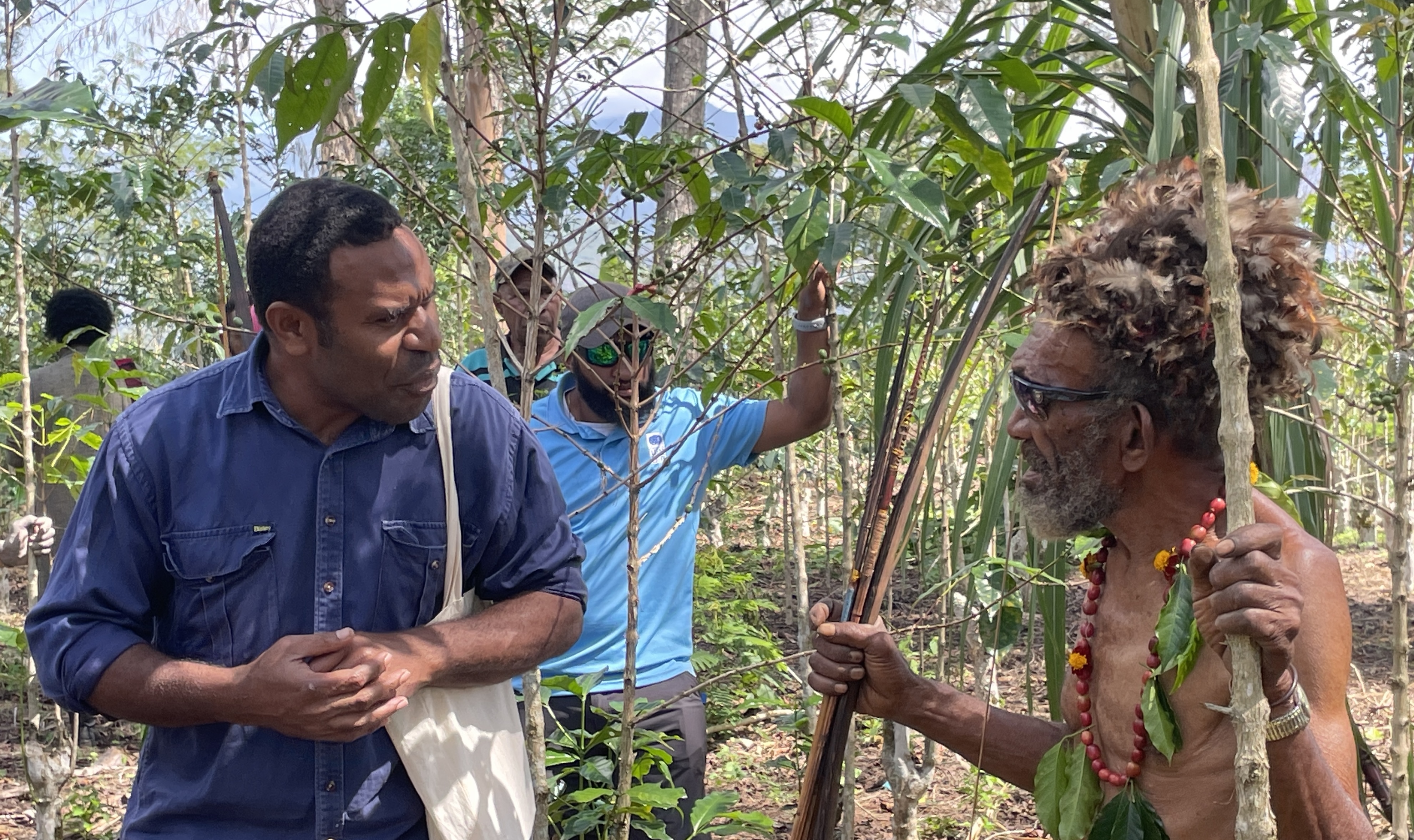
Nakau traditionally works with community-owned forest carbon projects where expanses of healthy forest are protected from threats, including logging and land-clearing. However, our experience working with customary landowners and small high-integrity projects can help outline how a coffee farmer would be able to engage in a carbon project, with regards to:
- Additionality (the real difference the project would make)
- Permanence (establishing a long-term project)
- FPIC (free, prior and informed consent)
- Governance and sharing benefits
- Access to the voluntary carbon market.
“The project type is very different but in working with coffee farmers we would apply the same principles as with forest-owners, just with a different approach,” says Alex.
Local NGO partner Community Development Association (CDA) has also been undertaking field-level research to better understand the baseline scenario based on the existing practices of coffee farmers in Simbu Province. Their particular focus is on surveying shade trees within existing coffee gardens, which is crucial to ensure a locally informed and contextualised design for ongoing research.

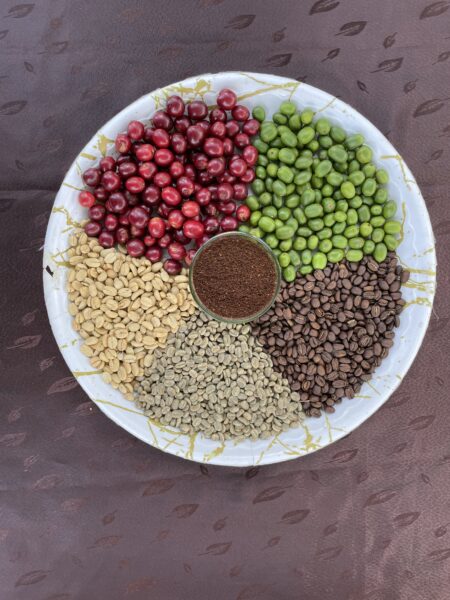
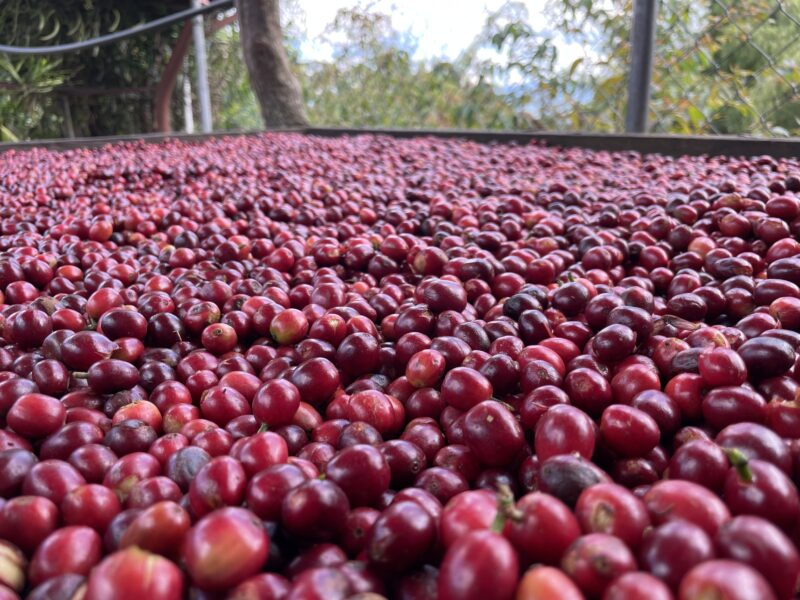
“Indigenous landowners and smallholder farmers like coffee farmers deserve equitable access to markets — including carbon markets,” says Michael Dyer.
“In places where there are no longer old-growth forests, exploring how more sustainable agroforestry practices can achieve this is relevant to ensuring more people can sustain their lives and communities in a rapidly changing environment.”
With this in mind, the research project also seeks to understand the social and policy frameworks in Papua New Guinea and how this would impact project development for coffee farmers.
Sustineo’s research consultants Almah Tararia and Ellis Mackenzie have been looking at the REDD+ regulatory framework in development in Papua New Guinea. Their findings show this has been developed for larger forest carbon projects and may not be suited for smallholder farmer carbon initiatives, or other small-scale customary landowner projects.
“Projects on the voluntary carbon market are best going to succeed at small scale, in family groups,” says Almah Tararia. “Papua Guinea’s current carbon market regulations are designed for large forest areas. To support smallholders, the regulations need to change to cater for agroforestry and small-scale projects.”
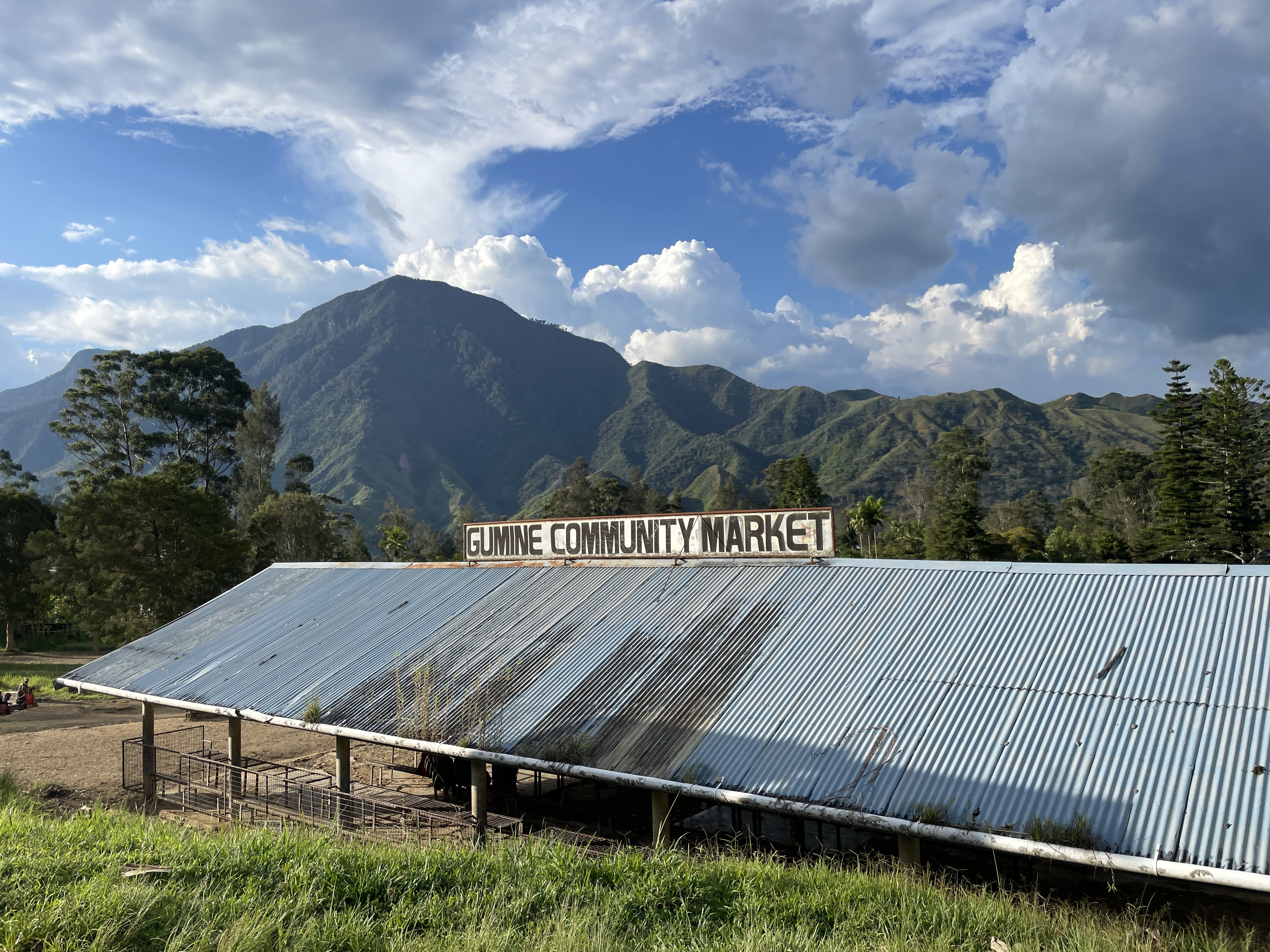
So can smallholder coffee farmers improve their climate resilience, grow higher quality coffee and diversify their income?
The research to date shows climate smart agriculture initiatives like agroforestry could help grow higher quality coffee, increase carbon within the agricultural system and lead to income opportunities for community-led investment.
However, the volume of carbon generated by increasing shade trees in coffee systems may not be enough to establish a feasible carbon project under the current eligibility criteria. Our feasibility study research found many of Simbu’s smallholder coffee gardens are less than one hectare, and there are limits to how many shade trees can be planted while still allowing coffee plants to thrive.
It was also found that high operating costs limit what is possible, as it is logistically expensive to support farmers to meet carbon project requirements in remote areas. Papua New Guinea’s proposed regulatory environment also adds costs in terms of fees and compliance because it proposes that a share of revenue remain with the government in return for services and regulating the carbon market — a decision that other Pacific countries may also adopt.
“There is real opportunity for climate smart agriculture initiatives to access the carbon market,” says Alex.
“But benefits must include both climate resilience for crops as well as the carbon benefits. And operating costs need to be the right size for the Papua New Guinea context.”
The regulation needs flexibility to allow for differences within the forest carbon sector, including approaches that suit smallholder farmers in addition to large customary landowner groups, and agroforestry systems alongside forest ecosystems.
Learn more about this research work in a recent presentation at the University of Papua New Guinea.
____
This research is funded by the Australian Department of Foreign Affairs and Trade and is led by the Australian National University’s Institute for Climate, Energy & Disaster Solutions. Partners in scoping this research include Papua New Guinea’s Coffee Industry Corporation and local NGO partner the Community Development Association (CDA).
